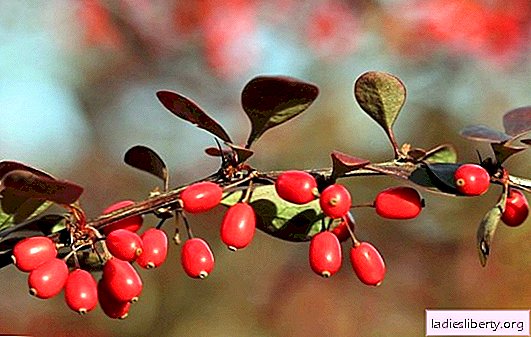
Klopogon - general description
The genus Klopogon from the family Ranunculaceae is represented by perennial herbaceous plants reaching a height of 30 cm to 90 cm, with a thick branched rhizome and cirrus leaves. The plant blooms in July-September with white flowers collected in panicle-racemose inflorescences. Ripening occurs quickly, in August-September. Black cohosh is used in folk and traditional medicine as a medicinal plant.
Klopogon - types and places of growth
The main places of growth of black cohosh are the forests of Asia and North America. In our country it grows in coniferous and birch forests of Western Siberia and Altai. In nature, there are about 15-20 species of this plant, among which the most famous are black cohosh, black cohosh, heart-rending black cohosh, black cohosh, simple black cohosh, smelly black cohosh, European black cohosh, Japanese black cohosh.
Black cohosh - medicinal properties
Black cohosh contains active substances that stimulate the production of estrogen. This property makes black cohosh preparations indispensable in the treatment of diseases of the female genital area and climacteric disorders, as they can reduce the severity of flushing, reduce vaginal itching and have a good anti-inflammatory effect, as well as an antispasmodic and diuretic effect.
Therefore, black cohosh preparations are widely used in gynecology for the treatment of painful menstruation (dysmenorrhea), lack of menstruation (amenorrhea), heavy menstrual bleeding, as well as to eliminate unpleasant symptoms in the premenstrual period. Black cohosh preparations are also prescribed for the treatment of depression associated with menopausal disorders; increased nervous excitability; hypertension headaches associated with vasospasm; lesions of the oral mucosa (stomatitis, gingivitis, periodontal disease).
Recent studies have shown that black cohosh contains substances that, like tannins, contribute to tissue scarring.
Black cohosh - dosage forms
As medicinal raw materials, the roots of the plant are used, which should be collected in the fall, after the ripening of black cohosh fruits. After grinding and drying, extracts, water infusions and alcohol tinctures are prepared from them, and are also used as a powder.
Black cohosh - recipes
To alleviate muscle or joint pain, apply compresses soaked with black cohosh tea, to prepare which the dried root is boiled for about half an hour in a small amount of water, then the tissue is moistened in the resulting liquid and applied to the sore spot for 20 minutes.
For the treatment of skin diseases, premenstrual syndrome, menopause, toxicosis of pregnant women take a decoction of black cohosh, for the preparation of which 5 gr. dry raw material is poured into a glass of water, boiled for about 7 minutes, then, insisting 2 hours, filtered and taken 100 g. thrice a day.
To treat neuralgia, migraine, asthma, rheumatism, hysteria and to activate the digestive system, tincture of black cohosh rhizomes is taken, for the preparation of which 1 part of the medicinal raw material is poured with 5 parts of alcohol (70%) and insisted for 5 days. Take 30 drops three times a day.
Black cohosh, powdered, taken in a dosage of 40 to 200 mg several times a day, but in total no more than gr. per day.
Black cohosh - contraindications
To date, there is no data on the toxic effect of black cohosh on the human body, even with prolonged use. However, it is contraindicated in pregnant and breastfeeding women. You can also not take black cohosh if you are allergic to aspirin or to plants that belong to the ranunculus family; with thrombosis, strokes, convulsions.
Using black cohosh preparations, you need to know a few more significant points. So, it is able to interact with hormonal drugs, so if you are taking birth control pills, estrogens or antiestrogens, you should definitely get a doctor's consultation. You should also be careful when taking black cohosh preparations, combining it with taking drugs to lower blood pressure or to thin the blood, so black cohosh enhances their effect.
When taking black cohosh preparations, adverse reactions may occur in the form of a slow heartbeat, headache, dizziness, sweating, blurred vision, constipation, osteoporosis, nausea and vomiting.
Comments











